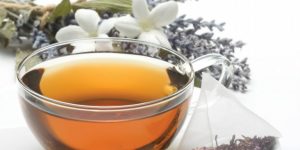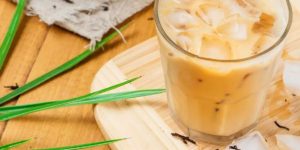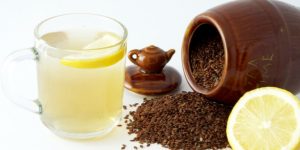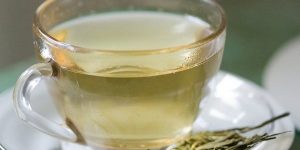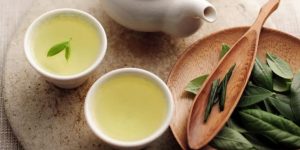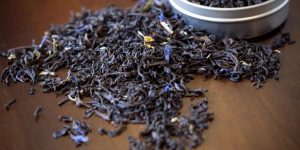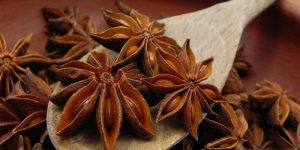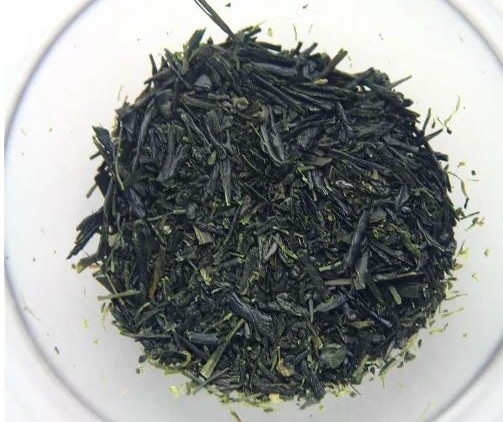
The most popular tea in Japan is sencha green tea a tea with a fresh green flavor and color. It is a whole leaf tea that can be enjoyed hot or cold and represents more than half of Japan's annual tea harvest.
Quick Facts
Origin: Japan
Alternative names: Green Tea Japanese
Temperature: 170°F
Caffeine: 20-30 mg per cup

What is sencha green tea?
O sencha green tea it is a Green Tea steamed made from small leaves of Camellia sinensis (tea bushes). Japanese Sencha tends to have a refreshing flavor that can be described as vegetal, green, seaweed or grassy.
Flavors vary depending on the different types of sencha and how they are produced.
After harvest, processing of the sencha green tea It starts with a quick steam of fresh tea leaves.
Preventing oxidation and locking in green color and flavor. The leaves are then rolled, shaped and dried. Sencha teas are also produced in China, South Korea, and other countries, although the teas can be very different.
Mainly from their Japanese counterparts, due to differences in the tea plants and processing techniques used. These teas are often used for blending and have a roastier, nuttier flavor than grassy Japanese sencha.((https://www.mdpi.com/2072-6643/7/7/5245))
Benefits of sencha:
O sencha green tea is known for its potential health benefits thanks to its high levels of catechins, a type of antioxidant. Additionally, because sencha is minimally processed with very little oxidation, many of these benefits are well preserved in this Green Tea.
Help to lose weight
O Green Tea It has long been studied for its role in weight loss. Additionally, some studies show that regular consumption of green tea (more than two cups a day) along with an active and healthy lifestyle can help keep you fit. 1
Improved blood flow
Studies have shown that the sencha green tea improves blood flow, helping to reduce blood pressure and cholesterol, which may reduce the risk of heart failure.
Better blood flow also helps regulate sugar levels, which can be beneficial for people with diabetes.
Better brain function
How the Green Tea helps with blood flow, can also help with brain function. Furthermore, a study showed that individuals who consume sencha green tea have greater activity in the memory part of the brain.
Sencha tea uses
Sencha is often consumed hot and at all hours of the day in Japan. Plus, with moderate to low levels of caffeine, it can provide a good boost without keeping you up at night. Vibrant green in color and fresh in flavor, it also makes a refreshing iced tea.
How to drink sencha
Senchadō is the traditional Japanese way of preparing and serving sencha green tea and involves a series of special tools and dishes. Entire rooms and buildings (tea rooms) are dedicated to the art of preparing and drinking tea.
For casual fun at home, use a ratio of 1 teaspoon of tea to 1 cup of fresh, pure water (not distilled). Furthermore, Japanese sencha teas prefer a lower fermentation temperature, around 170º.
If you don't have a thermometer, use water that has barely begun to boil. Sencha also requires a short preparation time. How long will depend on the variety, water temperature level, and amount of tea used.
Some senchas are best at an incline of 15 to 30 seconds, while others can hold for up to 2 minutes. Whole leaf tea is generally superior to tea bags, especially when drinking sencha.
However, some high-quality whole leaf tea bags are available. Follow the preparation instructions on the box. Steeping for too long or at too high a temperature can give sencha tea a bitter taste, overshadowing its qualities.
If your tea comes with brewing instructions, follow them closely for the best results. If you are steeping the tea more than once, try shortening the steeping time a little and using slightly hotter water for the second steep.((https://www.internationaljournalofcardiology.com/article/S0167-5273(14 )02237-2/fulltext))
Caffeine content in sencha
O sencha green tea, including sencha, contains a moderate amount of caffeine. Depending on the variety and drink, sencha can contain between 12 and 75 milligrams of caffeine, comparable to 80 to 200 milligrams of caffeine in a cup of coffee.
Thanks to a short preparation time, most cups hover around 20 to 30 milligrams. Additionally, Chinese sencha, which is typically roasted, has lower levels of caffeine than most Japanese green teas.
O Green Tea grown in the shade has higher levels of caffeine. Additionally, when prepared properly, sencha is not highly acidic. A long brewing time or very hot water can give the tea an astringent taste.
Buying and storing
O sencha green tea it can be found in supermarkets, Asian markets, health food stores, tea shops and online. Additionally, for an authentic experience, look for young sencha that is grown and harvested in Japan.
The entire curled leaves will have a deep green appearance. Save the Green Tea in an airtight container away from heat and light. Sencha, especially tea harvested early in the season, is best used within a few months.
The tea will not spoil after this time, but it will lose some of its fresh flavor. Additionally, roasted Chinese sencha lasts for at least six months.((https://link.springer.com/article/10.1007/s00213-014-3526-1))
Types of sencha
There are several different types of sencha green tea, differentiated by when they are harvested, how they are processed, where they are grown and much more. Most are divided into categories based on their mushi or how long they are steamed.
Shincha:
Also known as ichiban-cha or “new tea,” shincha is sencha harvested in spring at the beginning of the growing season.
It tends to have a sweeter, more nuanced, and sometimes richer flavor than other types of sencha. Furthermore, it is enjoyed in Japan and most shincha is sold in the country.
Asamushi:
This is a lightly steamed form of sencha (about 20 to 30 seconds). Additionally, all sencha tea is steamed during processing, but the length of the cooking time varies. A lighter vapor will result in a lighter, cleaner, more delicate tea.
Chumushi:
This is another mushi from sencha green tea. It lies between asamushi and fukamushi sencha and is usually steamed for 30 seconds to a minute.
Fukamushi:
It is steamed for at least 1 minute and sometimes longer. Additionally, due to deeper steam cooking, it has more broken leaves than asamushi.
Fukamushi sencha has a bold oceanic flavor with less nuance and a correspondingly rich, dark green color.
In powder:
Sencha powder can be considered a variation of matcha, but unlike matcha, it is not grown in the shade. Plus, it has a nice, spring-like vegetal flavor and works well for baking.

